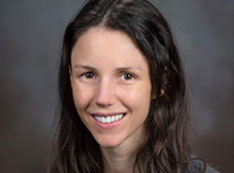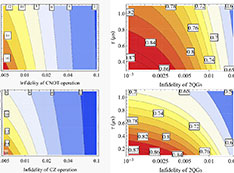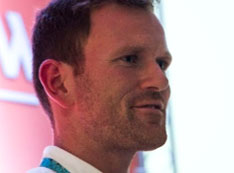Latest Publications
March 16, 2022
Building a Quantum Engineering Undergraduate Program
By A. Asfaw, B. Johnson, S. Economou, Klein-Seetharaman, M. Laforest, H. Lewandowski, T. Lynn, C. McRae, C. Merzbacher, S. Michalakis, T. Searles, C. Singh, et al.
A roadmap is provided for building a quantum engineering education program to satisfy U.S. national and international workforce needs.
Background: The rapidly growing Quantum Information Science and Engineering (QISE) industry will require both quantum aware and quantum-proficient engineers at the bachelor’s level.
Research Question: What is the best way to provide a flexible framework that can be tailored for the full academic ecosystem?
Methodology: A workshop of 480 QISE researchers from across academia, government, industry, and national laboratories was convened to draw on best practices; representative authors developed this roadmap.
Findings: 1) For quantum-aware engineers, design of a first quantum engineering course, accessible to all STEM students, is described; 2) for the education and training of quantum proficient engineers, both a quantum engineering minor accessible to all STEM majors, and a quantum track directly integrated into individual engineering majors are detailed, requiring only three to four newly developed courses complementing existing STEM classes; 3) a conceptual QISE course for implementation at any postsecondary institution, including community colleges and military schools, is delineated; 4) QISE presents extraordinary opportunities to work toward rectifying issues of inclusivity and equity that continue to be pervasive within engineering. A plan to do so is presented, as well as how quantum engineering education offers an excellent set of education research opportunities; and 5) a hands-on training plan on quantum hardware is outlined, a key component of any quantum engineering program, with a variety of technologies, including optics, atoms and ions, cryogenic and solid-state technologies, nanofabrication, and control and readout electronics. Read More
Entanglement Entropy Production in Deep Inelastic scattering
By K. Zhang , D. Kharzeev, V. Korepin, et al.
Deep inelastic scattering (DIS) samples a part of the wave function of a hadron in the vicinity of the light cone. Lipatov constructed a spin chain which describes the amplitude of DIS in leading logarithmic approximation. Kharzeev and Levin proposed the entanglement entropy as an observable in DIS [Phys. Rev. D 95, 114008 (2017)], and suggested a relation between the entanglement entropy and parton distributions. Here we represent the DIS process as a local quench in Lipatov’s spin chain and study the time evolution of the produced entanglement entropy. We show that the resulting entanglement entropy depends on time logarithmically, S(t)=1/3ln(t/τ) with τ=1/m for 1/m≤t≤(mx)−1, where m is the proton mass and x is the Bjorken x. The central charge c of Lipatov’s spin chain is determined here to be c ¼ 1; using the proposed relation between the entanglement entropy and parton distributions, this corresponds to the gluon structure function growing at small x as xGðxÞ ∼ 1=x1=3. Read More
Matrix-Model Simulations Using Quantum Computing, Deep Learning, and Lattice Monte Carlo
By Michael McGuigan, et al.
Matrix quantum mechanics plays various important roles in theoretical physics, such as a holographic description of quantum black holes, and it underpins the only practical numerical approach to the study of complex high-dimensional supergravity theories. Understanding quantum black holes and the role of entanglement in a holographic setup is of paramount importance for the realization of a quantum theory of gravity. Moreover, a complete numerical understanding of the holographic duality and the emergence of geometric space-time features from microscopic degrees of freedom could pave the way for new discoveries in quantum information science. Euclidean lattice Monte Carlo simulations are the de facto numerical tool for understanding the spectrum of large matrix models and have been used to test the holographic duality. However, they are not tailored to extract dynamical properties or even the quantum wave function of the ground state of matrix models. Quantum computing and deep learning provide potentially useful approaches to study the dynamics of matrix quantum mechanics. If successful in the context of matrix models, these rapidly improving numerical techniques could become the new Swiss army knife of quantum gravity practitioners. In this paper, we perform the first systematic survey for quantum computing and deep-learning approaches to matrix quantum mechanics, comparing them to lattice Monte Carlo simulations. These provide baseline benchmarks before addressing more complicated problems. In particular, we test the performance of each method by calculating the low-energy spectrum. Read More
Preparing Exact Eigenstates of the Open XXZ Chain on a Quantum Computer
By S. Economou, et al.
The open spin-1/2 XXZ spin chain with diagonal boundary magnetic fields is the paradigmatic example of a quantum integrable model with open boundary conditions. We formulate a quantum algorithm for preparing Bethe states of this model, corresponding to real solutions of the Bethe equations. The algorithm is probabilistic, with a success probability that decreases with the number of down spins. For a Bethe state of L spins with M down spins, which contains a total of (LM) 2M!M, the algorithm requires L + M2 + 2M qubits. Read More
Precise Electron Beam-Based Target-Wavelength Trimming for Frequency Conversion in Integrated Photonic Resonators
By Lillian Thiel, Alan Logan, Srivatsa Chakravarthi, Shivangi Shree, Kai-Mei Fu, et al.
We demonstrate post-fabrication target-wavelength trimming with a gallium phosphide on a silicon nitride integrated photonic platform using controlled electron-beam exposure of hydrogen silsesquioxane cladding. A linear relationship between the electron-beam exposure dose and resonant wavelength red-shift enables deterministic, individual trimming of multiple devices on the same chip to within 30 pm of a single target wavelength. Second harmonic generation from telecom to near infrared at a target wavelength is shown in multiple devices with quality factors on the order of 104. Post-fabrication tuning is an essential tool for targeted wavelength applications including quantum frequency conversion. Read More
Publications Guidelines
We are pleased to see preprints and publications from C2QA team members. As a reminder, the Department of Energy is very strict about delineating different sources of support in the acknowledgments.
For peer-reviewed articles and technical papers, please use the following exact wording:
This material is based upon work supported by the U.S. Department of Energy, Office of Science, National Quantum Information Science Research Centers, Co-design Center for Quantum Advantage (C2QA) under contract number DE-SC0012704.
Note that for work with multiple sources of support, DOE requires explicit acknowledgment of which aspects of the work and which individuals were supported by each source.
For each C2QA preprint, please forward a copy to Donna Cusa for inclusion in our database.
2022-19502 | INT/EXT | Newsroom
















